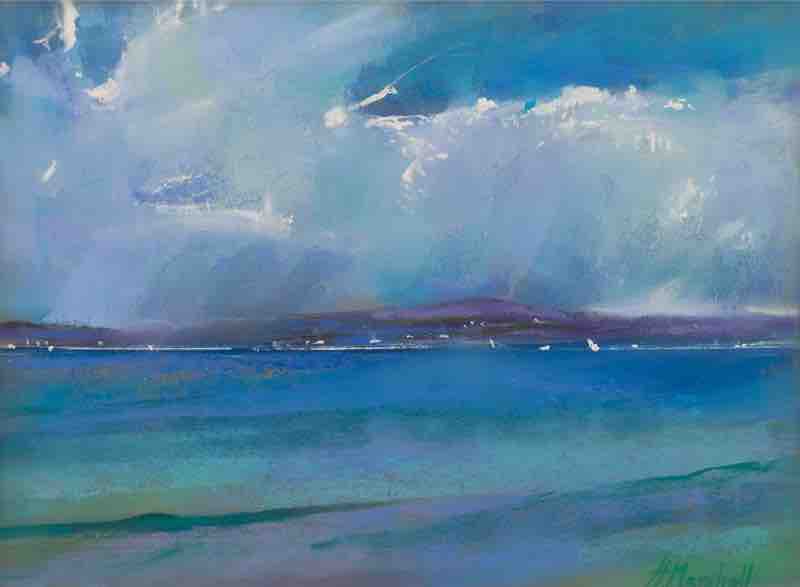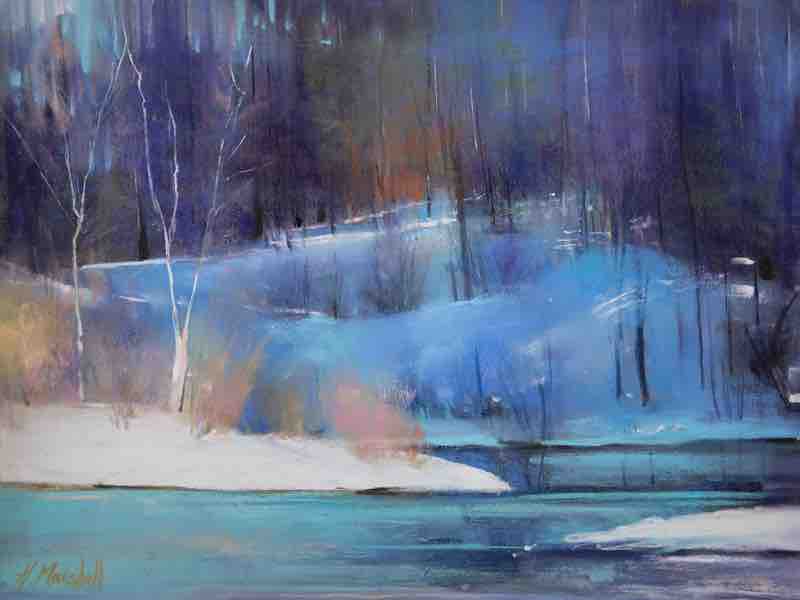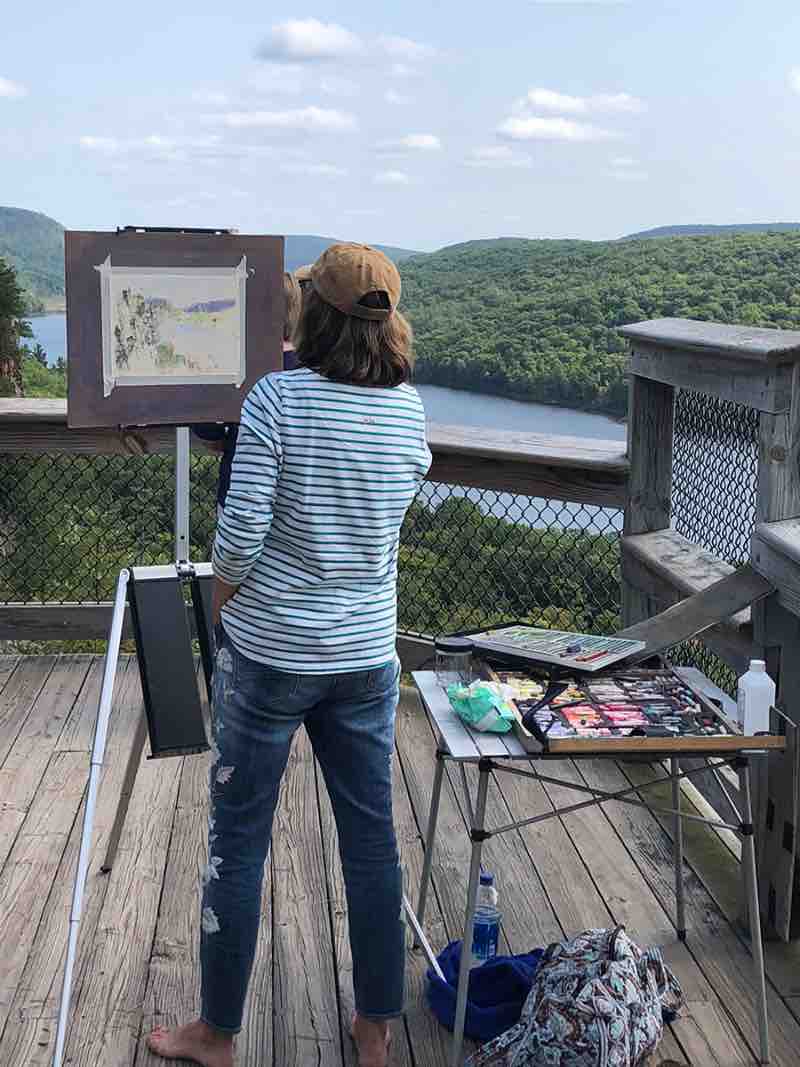
“Sometimes, students — and even more experienced painters — can kill a painting almost from the get go,” says Heidi A. Marshall. “They rush in, get heavy with pigment, and things quickly go from bad to worse. In an attempt to make corrections, they’ll paint over areas again and again, and soon there’s no tooth left to the sanded paper. What is left is a muddy mess. And if they try to reestablish the tooth by brushing off layers of pastel, clouds of dust fill the air. It doesn’t need to come to this!
“The remedy is to establish a feel for the medium and to make a plan of action. To start, practice making various marks to gain an understanding of what different brands and hardnesses of pastels can do. It’s like a violinist learning a variety of expressions with a bow; the pastels are our instruments, and we need to learn how to play them.

“From the onset of a plein air painting, it helps to employ a global approach that quickly establishes the relationships in a composition. A hard, dark(ish) pastel stick can lightly fly over the page to thinly establish the landscape and its values. I use the side of a hard pastel for this and work fast and loose, employing more pressure where values are darkest and less in light areas. The idea is to build the painting incrementally. Want to enhance the gorgeousness? Talk to yourself as you paint. For example, ‘I love the way these trees mimic the movement of the clouds.’ Suddenly, you’re painting poetically. You’re involving your mind and heart — and your voice. You’re considering beauty at every turn. You’re engaged.
Join Heidi A. Marshall and other master pastel painters from around the world at Pastel Live, September 18-24, 2024, for more tips, tricks, and techniques!
“Once you have a painterly impression that isn’t weighed down anywhere, it’s time to use medium soft pastels. Now you can gradually begin to build things up a bit. Establish your darkest darks more emphatically — bring in warmer tones where things turn under, away from the light. Establish your lightest lights and mid-tones a touch more. If it’s a clear day, remember to add a blue influence — always staying light with your touch. Again, working in increments is the name of the game.

“By doing so, you’re building to a kind of crescendo in your work. It starts to not only look like something, but feel like something. Lastly, get out your softest, buttery pastels and add the finishing touches. Check your edges. Do you need a sharp line? Think stylistically. Perhaps you need small glints of light here or there, or a vibrational layering in the sky. Maybe you feel compelled to add some bits of color that aren’t necessarily in the scene, but you just know they will add to the beauty of the painting.
“You can do this! Work in increments, enjoy the process, and I promise you’ll breathe new life into your work, and make your paintings come alive.”


